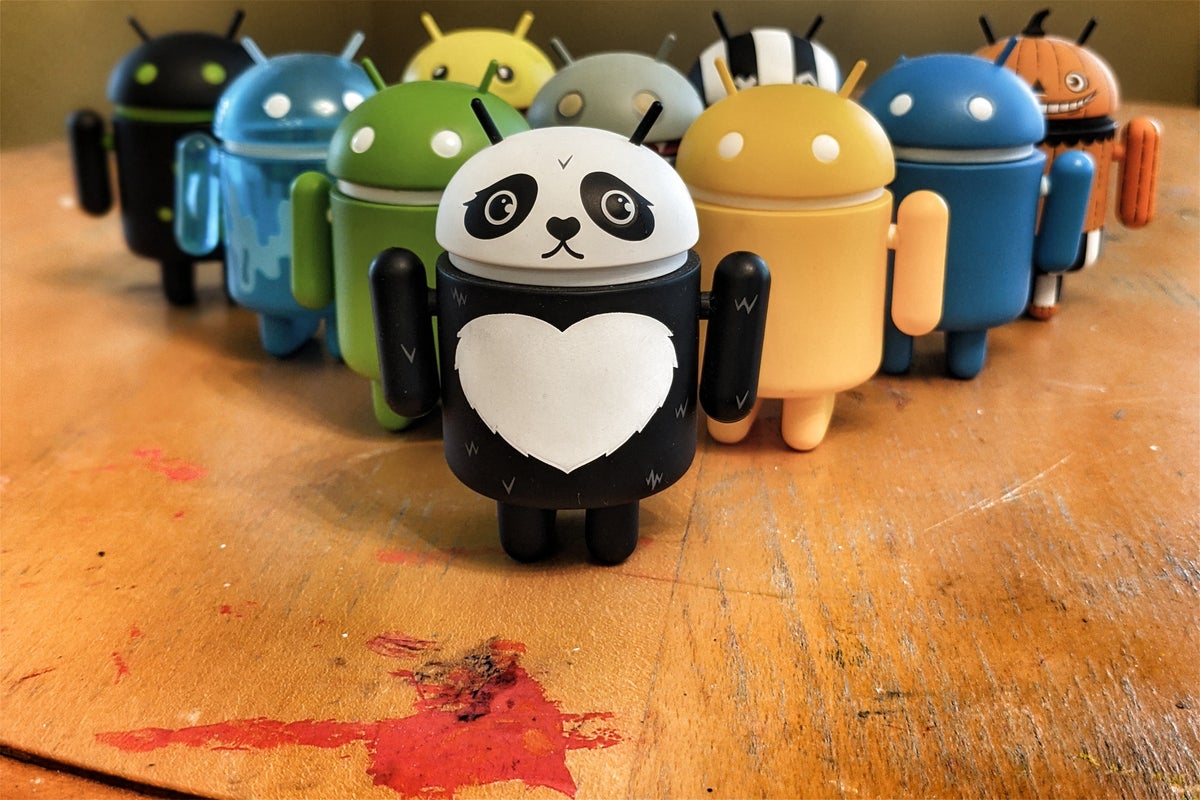Android 11's got plenty of good stuff going on, both on the surface and under the hood — but one of the release's most promising new additions is turning out to be one of its least compelling elements.
I'm talking about Bubbles, the long-under-development feature that first came into the picture as part of last year's Android 10 update but ended up getting pushed back to this year's release. If you haven't thought much about Bubbles since getting Android 11 (or since reading about the software, if you're using a non-Pixel phone and still waiting), well, I can't say that I blame ya.
At this point, there really isn't much to Bubbles in Android 11 — and what's there tends to range from "unnoticeable" to "mildly irksome," depending on your perspective. In its current form, Bubbles is relevant only for a handful of messaging apps, including Google's own Messages program and a sprinkling of other services. It's noticeably still missing from business-friendly enterprise tools, such as Slack, as well as from most non-Google, mainstream messaging destinations.
That, however, is another story for another time. The real issue is that even when Bubbles is present, its actual utility is almost shockingly limited. The system's entire function, at least at this point, is to take messages from a contact you've designated as being high-priority and make 'em appear in a persistent, floating bubble that shows up on top of everything else you're doing and can be collapsed down or expanded.
 JR
JR That's...fine, I guess? Personally, I've mostly found myself scrambling to dismiss any such conversations and get 'em off my screen as soon as they show up in that manner. But whether you appreciate that interface or find it annoying, there's no denying it's a far cry from the far-reaching productivity value we were initially promised with this system.
It's easy to forget now, but back when Bubbles was first introduced as part of the Android 10 beta, it had a much broader purpose — one that stretched way beyond its current message-thread pop-out function. Google's original presentation described Bubbles as a "new way for users to multitask and re-engage" with apps. And that was just the start:
Bubbles help users prioritize information and take action deep within another app, while maintaining their current context. They also let users carry an app's functionality around with them as they move between activities on their device.
Bubbles are great for messaging because they let users keep important conversations within easy reach. They also provide a convenient view over ongoing tasks and updates, like phone calls or arrival times. They can provide quick access to portable UI like notes or translations and can be visual reminders of tasks, too.
So, yeah: Messaging was a small part of the picture, but Bubbles was supposed to be so much more than that. It was supposed to represent a new way of getting stuff done on your phone — something that seemed, as I put it at the time, like it could be "a mobile multitasking breakthrough."
Quite frankly, the potential for Bubbles to be used within messaging apps was the feature's least interesting possibility. Far more intriguing was that notion of empowering you to "carry an app's functionality around" with you — the concept that promised to let you keep things like notes, lists, and other pieces of pertinent info present on your screen and readily available for ongoing, on-demand access.
That's where I was optimistic Bubbles could lay the groundwork for a fresh form of multitasking that'd actually make sense from a smartphone perspective — a way to interact with multiple apps simultaneously without having to commit to the desktop-like (and often awkward on mobile) idea of splitting your screen in half in order to focus on multiple things.
Think about how handy it'd be to tap a button and send your shopping list into a bubble that'd remain easily accessible and ready to load with a single tap, as needed, no matter what else you were doing. Or maybe you'd keep an in-progress email draft in a collapsable, bubble-contained window so you could work on it bit by bit while also focusing on a document or scrolling through a web page you were referencing in the message.
Those are the areas where Bubbles seemed like it could bring something new and genuinely useful into the Android environment — and yet those are the areas that are completely missing from its Android 11 implementation.
Outside of the small number of messaging apps that currently support it, Bubbles' narrow utility doesn't seem to be an issue of sluggish developer adoption but rather of a deliberate pivot on Google's behalf. For the proof, we need to look no further than Google's own Android 11 documentation, which is the resource designed to show developers exactly how they should tap into the software's various features. There, Bubbles is described as a way to "make it easy for users to see and participate in conversations" — and that's it. Quite the shift from the description we revisited a minute ago, wouldn't ya say?
It seems that somewhere along the way, the ambition for Bubbles got scaled back considerably from that original productivity-minded vision and turned into something far more limited — and far less useful. And for those of us who actually use our phones for productivity, that's a damn shame to see.
Sign up for my weekly newsletter to get more practical tips, personal recommendations, and plain-English perspective on the news that matters.

[Android Intelligence videos at Computerworld]






